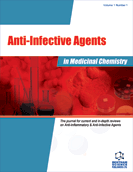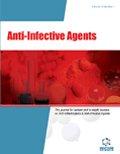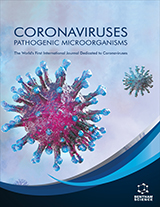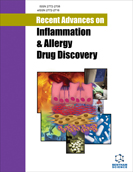Abstract
Treatment of invasive fungal infections with fungicidal antifungal agents is desirable in some clinical situations, particularly in the immunocompromised. However, there are a limited number of fungicidal drugs and most have undesirable side effects. Applicability of amphotericin B and its different lipid formulations is hampered by toxicity and the relatively low attainable serum concentration (not more than 1 μg/ml). Echinocandin antifungals (caspofungin, micafungin and anidulafungin) have a relatively narrow spectrum (Candida and some Aspergillus species), moreover, they are fungistatic against Aspergillus. The newer triazoles (voriconazole and posaconazole) offer broad spectrum of activity against pathogenic yeasts and moulds. Several recent studies described species dependent fungicidal activity of both voriconazole and posaconazole in vitro. These results are supported by results from animal models. This fungicidal activity has been thought to be confined to moulds only, but recent in vitro findings suggest that they exert fungicidal action against certain yeast species as well. Present work focuses on the fungistatic and fungicidal effect of azole antifungals against yeast and moulds, concentrating in particular on voriconale and posaconazole.
Keywords: Fungicidal action, triazoles, minimal fungicidal concentration, time-kill method, animal models
Anti-Infective Agents in Medicinal Chemistry
Title: Fungicidal Activity of Azole Antifungal Agents
Volume: 7 Issue: 2
Author(s): L. Majoros and G. Kardos
Affiliation:
Keywords: Fungicidal action, triazoles, minimal fungicidal concentration, time-kill method, animal models
Abstract: Treatment of invasive fungal infections with fungicidal antifungal agents is desirable in some clinical situations, particularly in the immunocompromised. However, there are a limited number of fungicidal drugs and most have undesirable side effects. Applicability of amphotericin B and its different lipid formulations is hampered by toxicity and the relatively low attainable serum concentration (not more than 1 μg/ml). Echinocandin antifungals (caspofungin, micafungin and anidulafungin) have a relatively narrow spectrum (Candida and some Aspergillus species), moreover, they are fungistatic against Aspergillus. The newer triazoles (voriconazole and posaconazole) offer broad spectrum of activity against pathogenic yeasts and moulds. Several recent studies described species dependent fungicidal activity of both voriconazole and posaconazole in vitro. These results are supported by results from animal models. This fungicidal activity has been thought to be confined to moulds only, but recent in vitro findings suggest that they exert fungicidal action against certain yeast species as well. Present work focuses on the fungistatic and fungicidal effect of azole antifungals against yeast and moulds, concentrating in particular on voriconale and posaconazole.
Export Options
About this article
Cite this article as:
Majoros L. and Kardos G., Fungicidal Activity of Azole Antifungal Agents, Anti-Infective Agents in Medicinal Chemistry 2008; 7 (2) . https://dx.doi.org/10.2174/187152108783954623
| DOI https://dx.doi.org/10.2174/187152108783954623 |
Print ISSN 1871-5214 |
| Publisher Name Bentham Science Publisher |
Online ISSN 1875-6018 |
 6
6





















